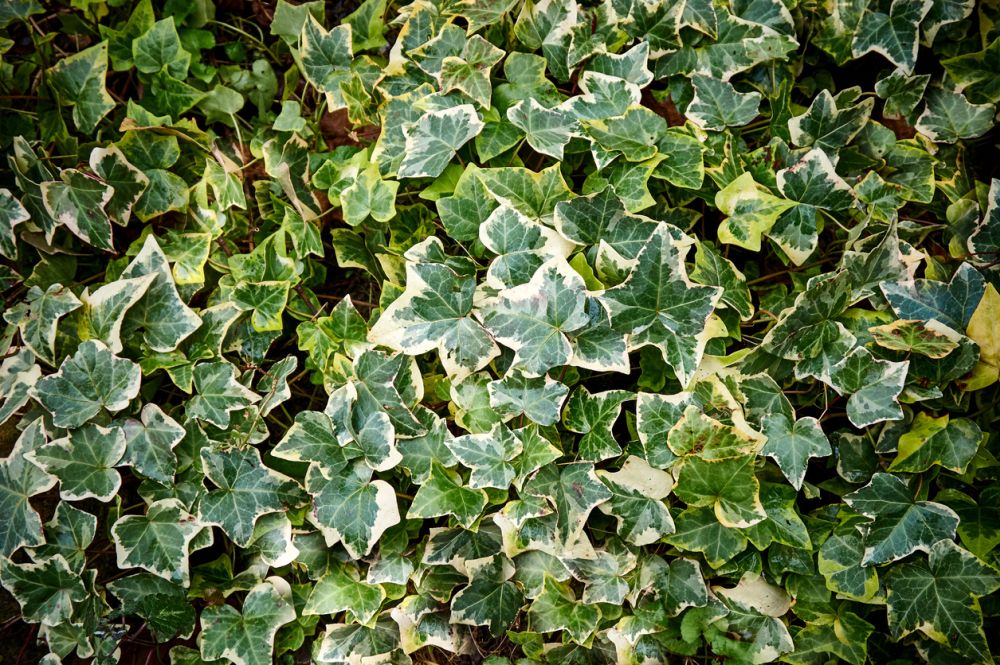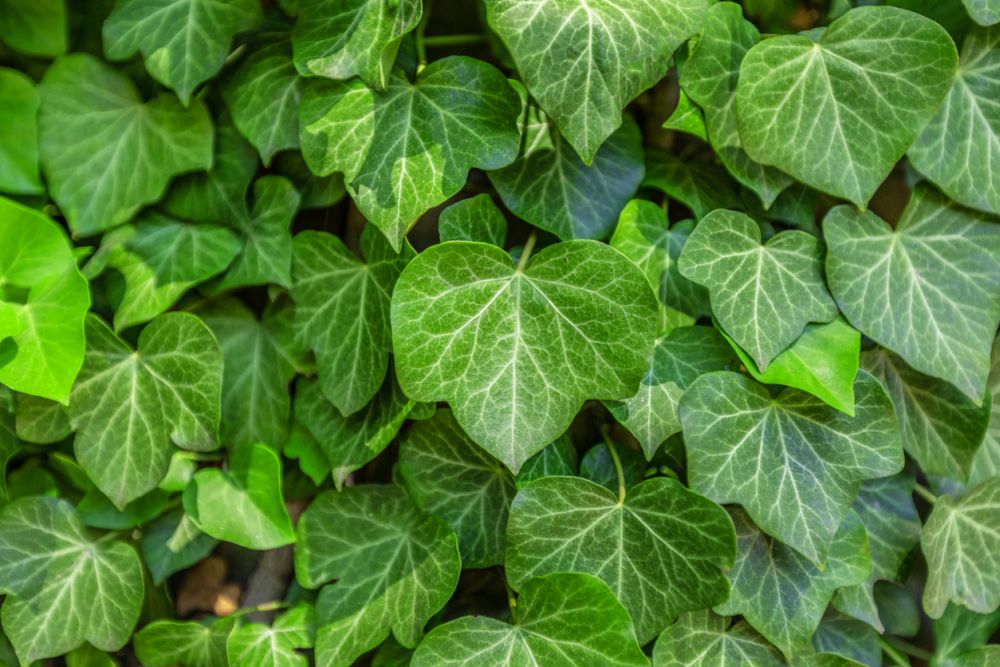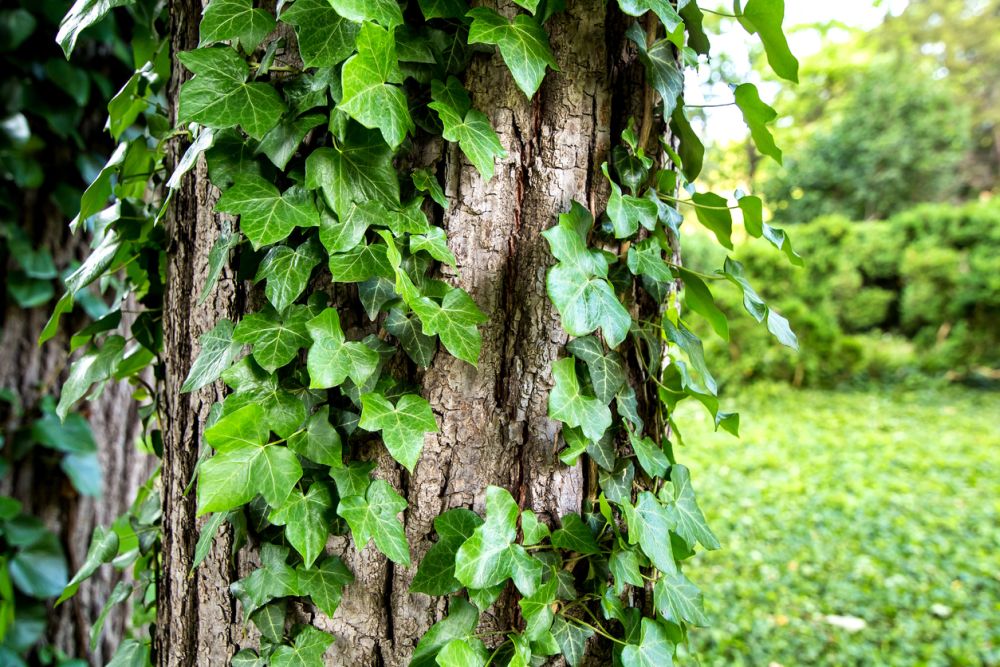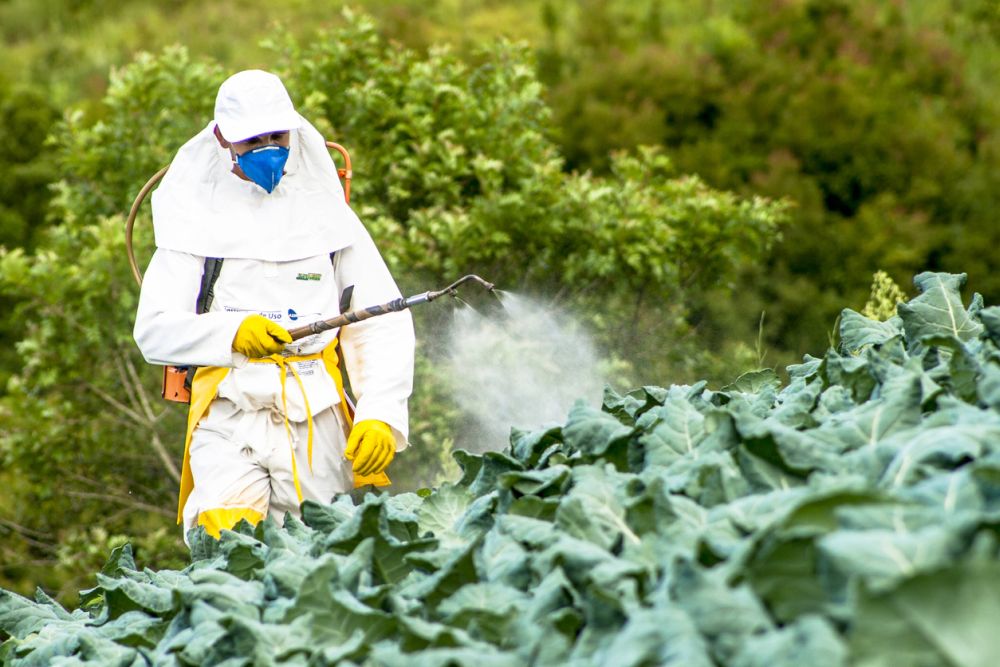If you’re like us, you probably despise English ivy. This invasive vine is extremely hard to get rid of and can quickly take over an entire yard. Read on to discover how to kill English ivy and ensure that it stays gone for good.

The downside of having a flourishing garden is that, eventually, English ivy will grow out of control. It’s a pesky invasive plant with a knack for growing and clinging to any surface, whether it’s a large tree, wall, fence, or toolshed. Additionally, English ivy crawls all over the ground, covering it with a thick and usually dangerous carpet.
The goal of this article is to teach you how to kill English ivy to ensure it doesn’t return to your garden. Find out how to remove English ivy from trees, the ground, and walls. You will also discover the best chemical herbicides and home remedies for killing English ivy. But first, let’s find out why it’s a good idea to get rid of English ivy and how to identify this plant.
Table of Contents
Why Get Rid of English Ivy

Not all ivy plants are bad. Some varieties like the have ornamental value, so you can use them to cover your walls and turn a drab structure into a lush green backdrop for floral plants.
Once English ivy takes over an entire area, it becomes increasingly difficult to remove. The roots of English ivy dig deep in the soil and stay active long after culling all the leaves and branches on the surface. And when you think you’ve successfully eliminated the green threat, the English ivy sprouts up again, reclaiming all its lost territories.
English ivy is an ivy species with more downsides than upsides, such as:
- This ivy species is toxic for humans and certain pets, causing rashes, nausea, swelling, and even vomiting. So it’s too dangerous to keep such a lethal plant near your children, dogs, cats, or rodents.
- English ivy always tries to expand and spread out, covering every inch of free space, which can be detrimental to other plants in the garden. After a while, ivy gets leggy, and the bottom parts of the branches become bare with the foliage hanging at the top.
- The dense foliage of English ivy is favored by pests that build nests there. If you have a rat problem, chances are the rats are turning the ivy vine into their new home.
- If English ivy takes hold of a tree trunk, it will absorb the moisture and nutrients from the soil, depriving the tree of its basic needs to grow and flourish.
In the next section, learn how to identify English ivy.
How to Identify English Ivy

This section teaches you how to identify English ivy by leaves, shape, color, and fruits:
- Leaves: The leaves of poison ivy usually grow in groups of three. If the leaves grow in alternate patterns of more or less than two, then they’re mostly harmless.
- Shape: Unlike other ivy species, English ivy can grow in any direction and take different shapes. While good ivy is a regular climbing plant that grows upwards, English ivy can grow both vertically and horizontally. It can also take up a bushy shape.
- Color: The leaves of English ivy are usually green, but they may turn red in the fall.
- Fruits: English ivy has translucent fruits, similar to poison oak.
In the next section, learn how to remove English ivy from trees.
How to Kill English Ivy on Trees

The following instructions teach you how to kill English ivy on trees:
- Prepare a sharp pair of loppers or clippers, depending on the thickness of the vines. Put on a pair of gardening gloves for protection.
- Start with the base of the tree where the vines are thickest. The vines should be around 4 inches wide if they’re just a few years old.
- Cut the vines as low as you can, from the thick ones to the thin ones.
- If the clippers won’t cut very thick vines, try a handsaw or even a chainsaw. Be careful not to clip the bark of the tree itself.
- Move up the trunk and, using the loppers, cut the thinner vines at shoulder level. Walk around the tree to make a full circle cutting.
- Pull the cut vines away from the tree. The vines should come off easily since you’ve already cut them at the base of the trunk.
- When you’re done, start removing the English ivy higher up. If the English ivy holds on to the branches, try to untangle it first without damaging the bark. Otherwise, leave them there for a few days until they die on their own.
- Dig out the roots of the vine from around the tree to prevent it from growing back.
- Check the tree for new ivy growth every few weeks.
In the next section, learn how to remove English ivy from the ground.
How to Kill English Ivy on the Ground

Removing a thick carpet of English ivy from the ground is more challenging than handling trees since it’s difficult to spot. Also, the vines are usually entangled in a dense web of leaves and branches that take time to unravel.
Learn how to kill English ivy on the ground by following these instructions:
- Use the same equipment for removing English ivy from trees: loppers or clippers, a handsaw for extra-thick vines, and a pair of thick gloves.
- Start by cutting sections of the English ivy on the ground. Since you can’t tell the main vines from the secondary ones, divide the ivy patch into sections and start cutting away.
- After cutting a whole section, pull the vines away from the rest of the dense web.
- Roll the section of English ivy away to make a thick log of ivy. Push it away from the ivy patch until you can safely dispose of it later.
- After removing the English ivy from the ground, spray the ground with a herbicide or use one of the safer ivy killer alternatives (more on this in a later section).
In the next section, learn how to remove English ivy from walls.
How to Kill English Ivy on the Wall

Discover how to kill English ivy on walls by following these instructions:
- Start by applying a herbicide or an alternative ivy killer (check the following sections).
- Allow the spray plenty of time to take effect since some English ivy leaves are covered with a protective layer of wax.
- When the leaves of the English ivy are drooping and the vines start to wilt, use your clippers, handsaws, and loppers to cut the base of the vines.
- Make vertical lines as you move up the wall to disentangle the vines.
- Pull the cut vines away from the rest. If they come off in your hand, throw them away in a pile.
- If there are too many holdfasts on the wall, spray them again and wait for a few days for the spray to take effect. Then scrub them off with a paint scrubber.
- Dig up the roots and add them to the pile of cut ivy vines. Now you can dispose of the whole lot safely.
In the next section, discover the best chemical herbicides for destroying English ivy.
Best Chemical Herbicides for Killing English Ivy

Ivy can be a real headache in your garden. But even poisonous species like English ivy are no match to the dangerous herbicides often touted as an effective treatment for the invasive plant.
The problem is that chemical herbicides have a negative impact on the environment, killing off good plants in the garden, along with bumblebees and honey bees. And some of them are considered , which is why it’s illegal to use chemical herbicides in certain states.
We list these herbicides here for educational purposes only since we don’t recommend using any of them in your garden:
- Glyphosate: This herbicide is quite effective against most ivy species, especially English ivy. It doesn’t spread in the soil beyond the spray perimeters, so it’s less risky for nearby plants and trees. But glyphosate is a dangerous chemical to cancer in humans.
- Triclopyr: This herbicide is used mainly against broadleaf plants. Like many other chemicals, triclopyr tends to stay in the soil long after the targeted plants have died out. How long the soil remains contaminated depends on the soil type and rainfall frequency.
In the next section, discover the best home remedies for destroying English ivy.
Best Home Remedy Alternatives for Killing English Ivy

Compared to chemical herbicides, home remedies are environmentally-friendly solutions and won’t put your family and pets in harm’s way. But home remedies take longer to produce an effect on English ivy.
Here are safe ways to dispose of English ivy using a white vinegar mixture, salt and duct tape, and mulching.
Let’s start with the white vinegar mixture.
White Vinegar Mixture
Using white vinegar mixture is quite effective against all ivy species, including English ivy. Here’s what you need to do:
- Mix 80% lukewarm water with 20% white vinegar and shake well.
- Fill a spray bottle with this mixture and use a garden sprayer to spray the ivy.
- Cover the leaves and vines thoroughly with the liquid, and leave them for a couple of days; the soaked parts of the ivy will eventually wilt and die out.
- Pull out the wilted ivy vines and apply the mixture again.
- Repeat this process until you eradicate the whole vine.
- Don’t spray the mixture on any plant you wish to keep.
In the next section, check out the salt and duct tape solution.
Salt and Duct Tape
Using salt and duct tape is more invasive than using a white vinegar mixture, but it’s effective against young thick vines. Here’s what you need to do:
- Make a cut in the vine using clippers and wrap the duct tape around the cut to make a cup or a cone.
- Fill the cup or cone with table salt and soak it with water.
- The resulting brine will seep into the cut and fill up the inside of the vine. Eventually, it will block the vascular system of the English ivy, causing it to wither and die.
In the next section, check out the mulching solution.
Mulching
Mulching is an excellent way to kill English ivy on the ground. Here’s what you need to do:
- Gather old newspapers, cardboard, and magazines. Shred them into small bits to create mulch.
- Cover the English ivy with a thick layer of mulch (3 to 5 inches). Make sure to cover the whole patch of English ivy, preventing it from breathing.
- Leave the mulch there for a couple of weeks before checking on the ivy. If it hasn’t died yet, give it another couple of weeks. Eventually, the ivy will die due to light, air, and moisture deprivation.
In the next section, learn more useful information about English ivy.
FAQ

This section gives you simple answers to common questions about English ivy.
Is English ivy poisonous?
Yes, English ivy is poisonous to humans and pets. The leaves and berries of the plant contain saponins, which can cause gastrointestinal issues if ingested. Symptoms may include vomiting, diarrhea, and excessive drooling. In severe cases, saponin poisoning can lead to seizures and death.
Does English ivy attract mosquitoes?
Yes, English ivy can attract mosquitoes. The leaves of the plant provide a shady, humid environment, ideal for mosquito breeding. Additionally, the saponins in the leaves can be toxic to mosquito larvae, causing them to develop more slowly or die outright.
How does English ivy spread?
English ivy spreads primarily through rhizomes, which are horizontal stems that grow just below the soil surface. These rhizomes can produce new roots and shoots, allowing the plant to rapidly colonize new areas. English ivy can also spread through seeds, which are typically dispersed by birds.
How fast does English ivy grow?
English ivy grows quickly, typically 4 to 6 inches per year. However, the plant can grow even faster in ideal conditions, such as rich soil and ample moisture. It can reach heights of up to 100 feet when given something to climb on.
The next and final section summarizes the entire article on killing English ivy.
Conclusion
To review, English ivy is a poisonous plant, a real threat to humans, pets, and other plants. If your yard is affected by this intrusive plant, it’s best to remove it as soon as possible. We’ve provided instructions for easily identifying English ivy and destroying it on trees, walls, and the ground.
Whether you prefer a dangerous but effective solution like using a chemical herbicide, or a safe and more time-consuming home remedy alternative is up to you.
What are your favorite tips for killing English ivy? Let us know in the comments below!
The post appeared first on .





























